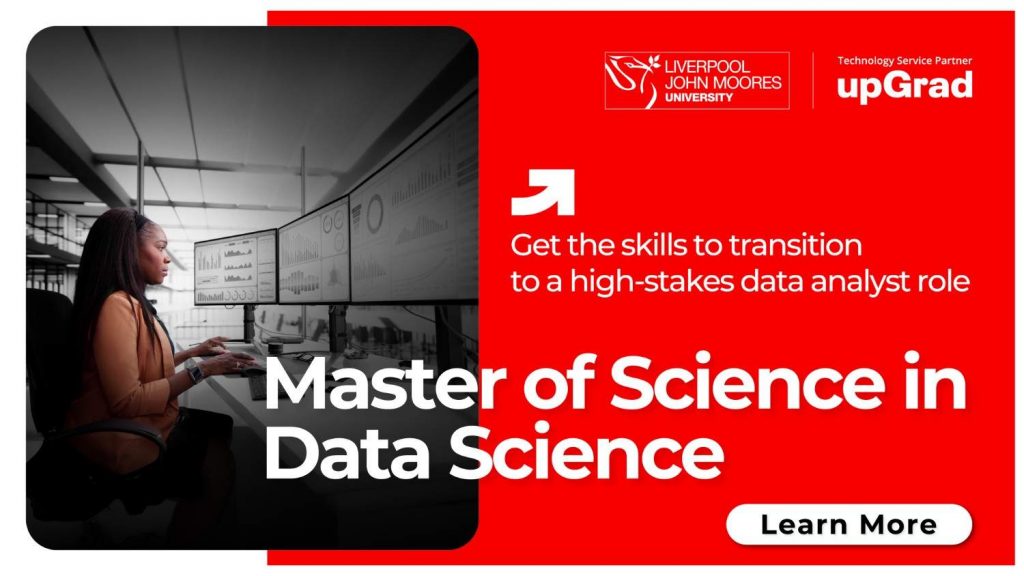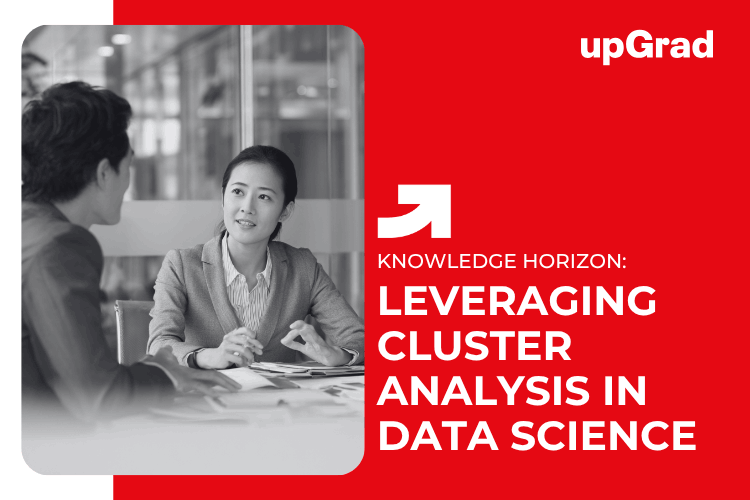Have you experienced an unsupervised learning issue for the very first time? If so, it’s most likely that your initial response was uncertainty because you aren’t searching for any particular solution. In fact, you’re searching for data structures.
The ones that aren’t associated with any particular results. This is where cluster analysis, popularly called clustering, comes to aid.
It is the process of searching or finding similar groupings of data within a vast dataset. It is considered a commonly used method in data science. Data scientists use this method as they believe that objects in a group are more comparable and identical to one another than objects in different groups.
In this article, you’ll learn all about cluster analysis, how to use it in data science, its benefits, and more. So, read till the end.
What is Cluster Analysis?
The cluster analysis method involves breaking up bigger populations of data into more manageable groups. The field of business analytics uses it extensively. How to arrange the enormous volumes of readily accessible information into useful structures is just one of the issues that organizations are currently confronting.
Alternatively, split a sizable population into more manageable homogeneous groups. The goal of cluster analysis—a tool for exploratory data analysis—is to arrange various objects so that their associations with one another are maximal when they are members of the same group and minimal otherwise.
For instance, a supermarket chain leveraged the power of clustering in data science to divide its millions of loyalty card holders into five groups depending on their purchasing patterns. Subsequently, to target every segment more successfully, it created tailored marketing methods.
Requisites of Cluster Analysis In Data Science
The subsequent points explain the reasons why clustering is necessary for data science:
- Scalability: To handle huge datasets, data scientists require cluster analysis methods that are extremely scalable.
- The Capability of Dealing With Various Properties: Algorithms must be capable of processing any type of data, including category, binary, and interval-based data (numerical ones).
- Finding Shape Attribute Clusters: The cluster analysis algorithm must be ready to find clusters with any shape. Make sure the algorithm isn’t restricted to only distances that have the propensity to locate small, spherical groupings.
- High Dimensionality: Besides handling low-dimensional data, the cluster analysis algorithm in data science must be capable of handling big-dimensional space.
- Adaptability To Noisy Data: Databases may include incomplete, noisy, or inaccurate data. Certain algorithms are susceptible to such information and may produce low-quality clusters.
- Interpretability: The outcomes of the cluster analysis method must be intelligible, useful, and understandable.
How To Use Cluster Analysis: An Overview
It’s crucial to understand that multiple algorithms work together to analyze clusters. A variety of algorithms often handle the more general duty of analysis, each of which frequently differs significantly from the others.
The best cluster analysis method produces clusters with extremely high intra-cluster resemblance, i.e., very comparable data within the cluster.
Furthermore, the cluster analysis algorithm must generate clusters with considerably lower inter-cluster resemblance or similarity. It means the algorithm should produce clusters with data as distinctive from one another as possible.
Let us explain it in simple terms. There is a wide range of ideas on what a cluster must be and how it must be defined. All these contribute to a range of cluster analysis techniques. Ever since they got published, the world of data science has been introduced to over 100 cluster analysis algorithms.
They stand for an effective machine learning method for unsupervised learning of data. When used on a data set with a cluster model considerably different from the one it was constructed for, an algorithm specifically intended for that sort of cluster model will typically not work.
A collection of data objects is the unifying element in all clustering techniques. However, data scientists and coders leverage a wide range of cluster models, and each model necessitates a unique algorithm.
There are two common ways to categorize groups of clusters or clusterings. These are hard and soft clustering. While hard clustering is where every single object belongs/corresponds to a cluster either fully or partially, soft clustering is the method where every object corresponds to every cluster only partially.
All of this is separate from “server clustering,” which normally refers to a collection of servers cooperating to increase accessibility for users and decrease downtime by temporarily allowing one server to replace a different server in the event of a failure.
Cluster Analysis Techniques:
The following are some clustering analysis techniques:
- K-Means: It searches for clusters by reducing the average distance between geometrical points.
- DBSCANL: It leverages geographic clustering depending on density.
- Spectral Clustering: This approach–based on similarity graphs–models the relationships between data points’ nearest neighbors as an undirected network.
- Hierarchical Clustering: With the original level (finest level) as the starting point, hierarchical clustering clusters data into a multilevel hierarchy tree of linked graphs.
Cluster Analysis Use Case & Example
Today, you can get access to a vast selection of readily available clustering algorithms. Given this, it isn’t unexpected that cluster analysis has emerged as a standard practice in a range of organizational and economic contexts.
Here is a real-life example of cluster analysis:
Sales and Marketing
Addressing the right consumers or potential consumers in the correct manner is essential for successful marketing. Clustering algorithms put persons with comparable features in the same group, maybe according to how likely they are to make a purchase.
When these groups or clusters are identified, test marketing across them is more successful. It contributes to the improvement of messaging for them.
Cluster Analysis & Data Scientists: A Great Relationship
As mentioned earlier, clustering is an unsupervised learning (machine–learning) technique. Thanks to ML’s capability of processing voluminous amounts of data, data science professionals can easily study the processed data and models.
This will help them derive or extract valuable information in no time. When deploying a clustering algorithm to data, professionals leverage cluster analysis to determine the categories that the data points fall into.
Pros & Cons of Cluster Analysis In Data Science
| Pros | Cons |
|
|
Cluster Analysis Applications
A few of the many applications of clustering analysis include image processing, data analysis, pattern identification, and market research.
- Clustering can assist marketers in identifying separate customer groups. Additionally, they can categorize their clientele based on their purchase habits.
- Cluster analysis can be used in biology to create taxonomies for plants and animals, group genes with related functions, and understand the structural characteristics of populations.
- Applications for detecting outliers, such as the identification of credit card fraud, also use clustering.
- Cluster analysis is a tool used in data mining to acquire an understanding of the distribution of data and identify the traits of each cluster.
Conclusion
To conclude, this article has everything you need to learn about cluster analysis to get started with this process in data science. Not only did you learn the benefits and applications of clustering, but also how to use it.
Although clustering is simple to use, there are certain critical considerations that must be made, such as handling outliers in your data and guaranteeing that each cluster has a sufficient population. A course in data science can help you learn about cluster analysis in more detail.
FAQs
How can I use cluster analysis?
To use cluster analysis, follow these three basic steps:
- Calculate the distances,
- Connect the clusters, and
- Select the ideal number of clusters to arrive at a solution.
What is an excellent example of cluster analysis of data in data science?
The retail marketing sector can be a good example of data clustering. Today, most retail businesses rely on the power of clustering to find communities of households that are similar to one another. For instance, a retailer might compile the household data like household size or income.
Which is the best method to use for data clustering?
There’s no doubt that K-Means is the best and most widely used clustering algorithm in the data science community. Several beginner-friendly ML and data science courses cover it.
What are the benefits of DBSCAN?
In comparison to other clustering methods, DBSCAN or density-based spatial clustering of applications has an array of advantages, including the capacity to manage data with various noise and shapes and the ability to calculate the number of clusters automatically. Also, it has good computing performance and can handle huge datasets.
What is the purpose of cluster analysis?
Finding unique groupings or “clusters” within a data collection is the aim of clustering. The tool uses a machine language algorithm to construct groups, where members of a group would typically share similar traits.








